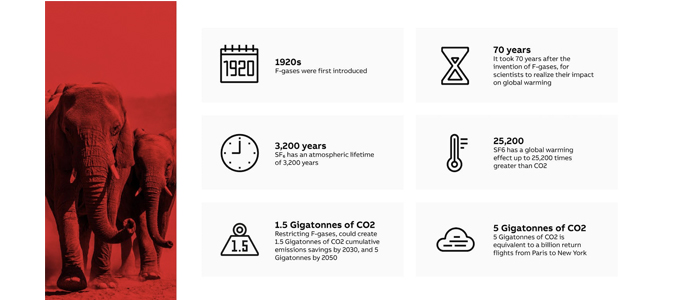- +61 7 3374 2877
- Email Us
Did you know that sulfur hexafluoride (SF6) is the most potent greenhouse gas known – nearly 25,200 times more potent than carbon dioxide – but is still widely used in power grid systems?
Fluorinated greenhouse gases (F-gases) are the key barrier for the energy industry’s transition to a greener future, which relies heavily on sustainable electricity generation. Regulators, power grid operators, electric utilities, big energy consumers and engineering firms must begin thinking seriously about migrating towards the specification of SF6 free switchgear now.
The increasing development and deployment of technologies such as energy storage and smart grids has huge potential to reduce societies’ reliance on fossil fuels by integrating more renewable energy sources into electricity systems, but there is another equally important aspect of electricity distribution that needs to be tackled alongside this: F-gases.

This family of synthetic gases, which were developed in the late 1920s, are used in essential industrial applications such as refrigeration, air-conditioning systems and fire protection. Most notably, however, one of these gases, sulfur hexafluoride, or SF6, is an extremely popular electrical insulation system for power systems. It is also widely used for current interruption in the transmission and distribution of electricity. In other words, its unique physical properties make it crucial to the reliable operation of many electricity systems around the world.
The fact that it is a very stable chemical with an atmospheric lifetime of 3,200 years means that even if its usage is reduced, there will still be a substantial build-up of the chemical in the atmosphere.
Together, we are moving
It is hardly surprising then, that as soon as regulators realised the enormous environmental impact of F-gases, steps were taken to reduce its use. Calculating that cutting F-gases could add up to cumulative emissions savings in the region of 1.5 gigatonnes of CO2 by 2030, legislation was quickly drawn up to limit its use.
In 2006, the European Union (EU) passed its first F-gas regulation, a move that stabilised EU F-gas emissions four years later. These were then revised in 2015, setting a new deadline of 2030 for cutting the region’s F-gas emissions by two-thirds compared to 2014 levels. With a fixed goal in site, migration towards a more certain SF6-free future gathered pace. And this shift is now set to accelerate even more rapidly, since a new proposal was submitted in April 2022, stipulating that the use of SF6 in MV switchgear will be prohibited from 2026 for applications up to 24kV and from 2030 for applications up to 52kV.
ABB is committed to a more sustainable future. Our work on SF6 free switchgear started in 2010, partnering with 3M, with ABB developing a promising alternative: ABB AirPlus insulation gas. While coming close to the technical performance of SF6, the new gas – with a Global Warming Potential of less than 1 – has virtually no impact on global warming. Since its first switchgear installation back in 2015, we have delivered over 9,000 units of SF6 free units worldwide.